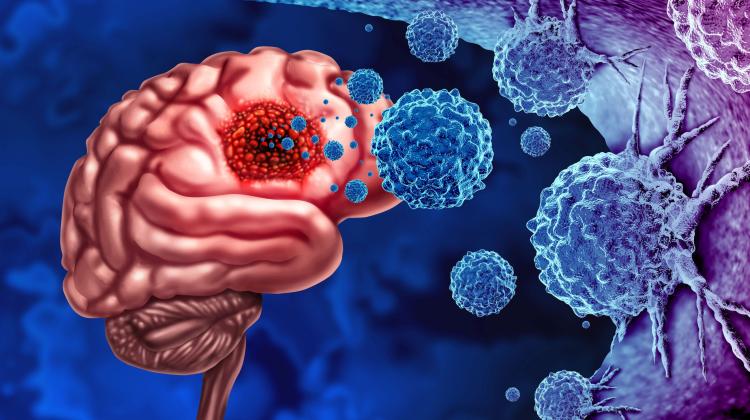Polish discoveries important for glioma therapy development
 Credit: Adobe Stock
Credit: Adobe Stock
The discoveries of Polish scientists may contribute to the development of new methods of treating glioblastoma multiforme, the University of Warsaw reports.
The research was conducted in parallel by two research teams. The first one proved that the loss of one of the intracellular receptors intensified the pro-inflammatory response of microglia in a mouse model of glioma and inhibited tumour growth. The second team showed that disabling another protein, a transcription factor, effectively inhibited the ability of cells of the same cancer to multiply. The discoveries may contribute to the development of new treatment methods.
Biologists from the University of Warsaw and the Nencki Institute of Experimental Biology were involved in both studies.
In the first study, Polish researchers were accompanied by scientists from Denmark, the Netherlands and Germany. Their joint publication in the journal EMBO Reports revealed the key role of the SorLA receptor in the pathogenesis of one of the most deadly cancers, glioblastoma multiforme.
According to the release published on the University of Warsaw website, glioblastoma multiforme (GBM) is an extremely aggressive and deadly brain tumour. Due to its high degree of malignancy and poor prognosis, it remains one of the greatest medical challenges in the field of oncology.
A breakthrough in the research on glioma pathogenesis was made by the team led by Dr. Anna Malik from the Faculty of Biology of the University of Warsaw.
'The main reason for a negative prognosis in glioblastoma is a faulty response of the immune system against the tumour', explains Dr. Malik, quoted in the UW press release. 'Paradoxically, the cells that should hinder the glioma development are involved in supporting its growth. This phenomenon is caused primarily by microglia and macrophages, which acquire pro-tumour properties in the glioma microenvironment and become its allies'.
The researchers have discovered that the receptor SorLA, responsible for the transfer of target proteins between intracellular compartments in neurons, has an important role in this process. It turns out that s high or low level of expression of SorLA gene-coding is linked to specific properties of cells: pro-tumour or pro-inflammatory. The researchers used the mouse model to show that its loss increases the pro-inflammatory response of microglia and inhibits tumour growth.
According to the researchers, unlocking the pro-inflammatory potential of microglia and macrophages directly at the site of glioma may be a strong mechanism for limiting its tumourigenesis. In this context, they believe that developing therapies targeting SorLA expression could prove to be an effective method of combating GBM. However, this is a matter of quite a distant future and requires many further studies, also to determine whether silencing the expression of the gene in question does not have a negative impact on patients.
'Further studies on the molecular details of the mechanism described herein and on its pathophysiological implications are needed to evaluate its clinical relevance', the authors of the publication conclude.
Work at the University of Warsaw was also carried out on another aspect of glioma development, namely on the formation of new blood vessels for its needs (neovascularization). This research has also led to very promising results, which indicate new perspectives for the treatment of patients suffering from this disease.
Dr. Marta Maleszewska's team of employees of the Faculty of Biology of the University of Warsaw, the Nencki Institute of Experimental Biology, the Maria Sklodowska-Curie National Research Institute of Oncology and The Children’s Memorial Health Institute has proven that disabling a transcription factor called DMRTA2 results in blocking the cancer cells' ability to multiply and inhibits tumour growth.
'The tumour progression and chemotherapy resistance are caused by glioma stem-like cells. We have discovered that their ability to proliferate is inhibited by the knock-down of the transcription factor called DMRTA2', says Dr Marta Maleszewska.
Dr. Maleszewska and her team have also demonstrated that the DMRTA2 factor could be involved in the formation of new blood vessels to supply the tumour with nutrients. This factor could therefore become a biomarker and a potential target for new therapeutic strategies in glioblastoma.
The results of Dr. Maleszewska's research were published in the journal Cell Death and Disease. (PAP)
Katarzyna Czechowicz
kap/ bar/ kap/
tr. RL
Przed dodaniem komentarza prosimy o zapoznanie z Regulaminem forum serwisu Nauka w Polsce.

















